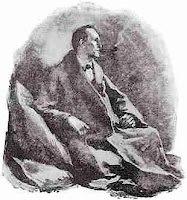
Here are three links that cut to the chase. One link goes into some detail about the magnitude of the project and the infrastructure that are at the center of the novel. Another ruminates on the effect on humanity of total solar eclipses and its implications. In the third, the Beekeeper summarizes the startling import of these eclipses. As a further aid, just under these links are two praise quotations from leading authorities on what to expect and how best to navigate the book to get the most out of it.
About Solar Eclipses The Infrastructure The Beekeeper Speaks
From Gary Lovisi, world-class Sherlock Holmes authority: "The Sussex Beekeeper is an incredible book. I can’t believe how much material and research
has been put into it ... [and] woven together so well; truly stunning; a
massive undertaking. The Holmes/Mycroft comments were fun. I think it
is a special book, very well done. Holmes/Quatermain and all readers who
like anything in that area will simply adore the book.”
From British fantasy authority Mark Valentine: “[The Sussex Beekeeper at the Dawn of Time] is a highly postmodern creation, conveying its narrative through many different sources, each inflected with different shades of irony or doubt. The author has structured the work [so that]…. one outer document leads to another, and these to further, inner documents, so that the reader experiences the book as if going through a series of doors in a labyrinth of secret passages. This approach is complex—the reader must keep their wits about them—and allusive. It asks for an alertness and constant curiosity. An impatient reader might be daunted by the layers of what appear to be preamble at the outset, but these are in fact essential to the way the book works…. [W]e must regard the book as like a curious crystal, which reveals some new dimension as each facet is caught in the light of our understanding.”
Available at amazon.com, Barnesandnoble.com , and practically all online marketplace book dealers.
Formal Notice:
All images, quotations, and video/audio clips used in this blog and in its
individual posts are used either with permissions from the copyright holders or
through exercise of the doctrine of Fair Use as described in U.S. copyright
law, or are in the public domain. If any true copyright holder (whether
person[s] or organization) wishes an image or quotation or clip to be removed
from this blog and/or its individual posts, please send a note with a clear
request and explanation to eely84232@mypacks.net and your request will be
gladly complied with as quickly as practical.





















